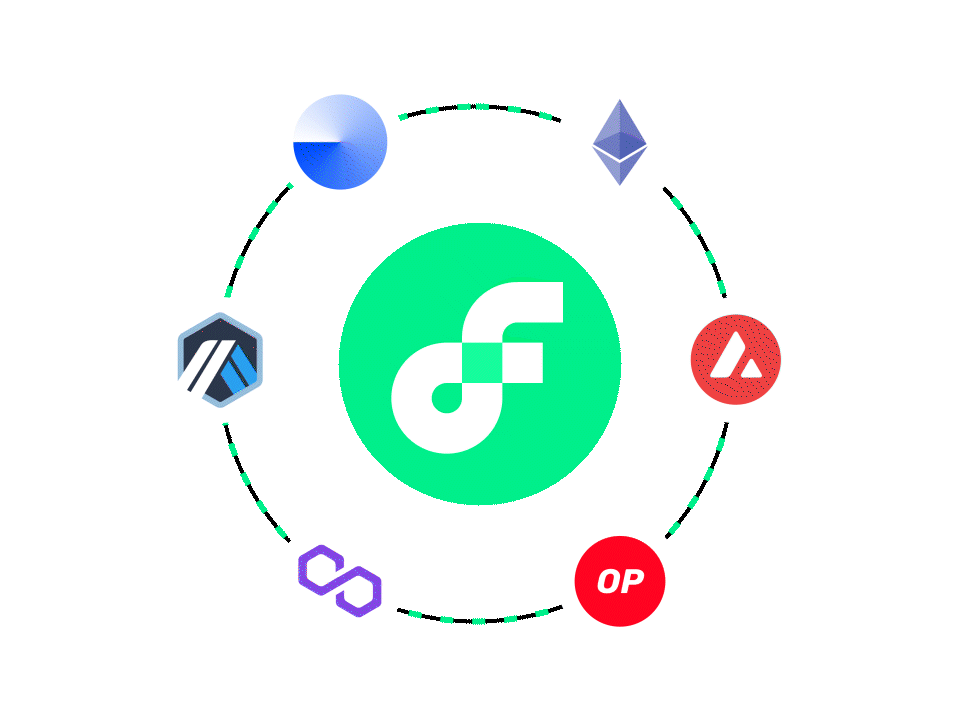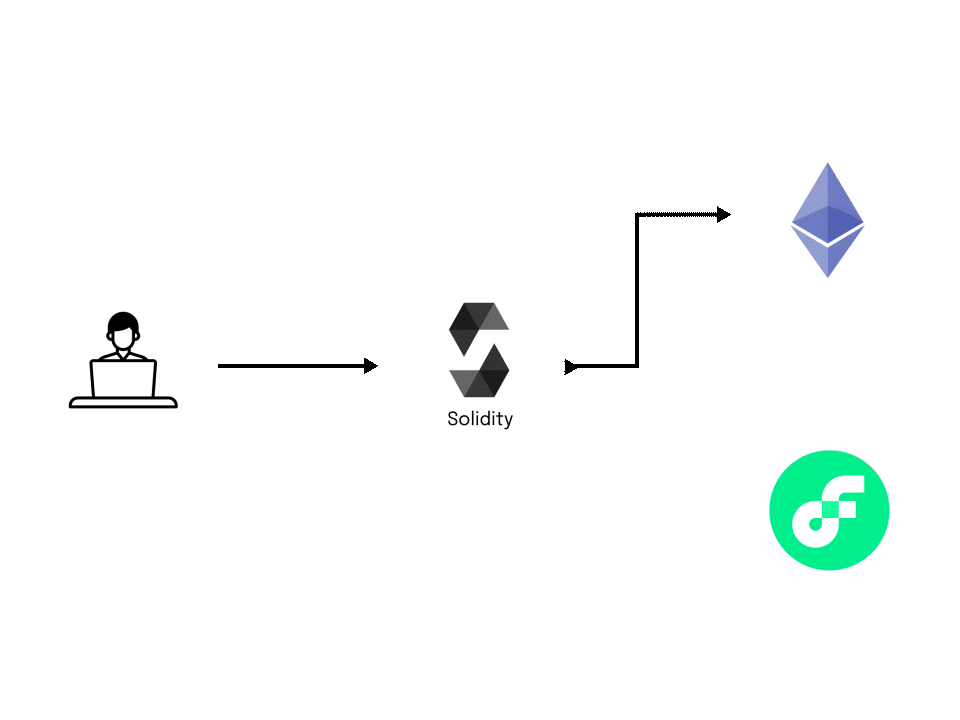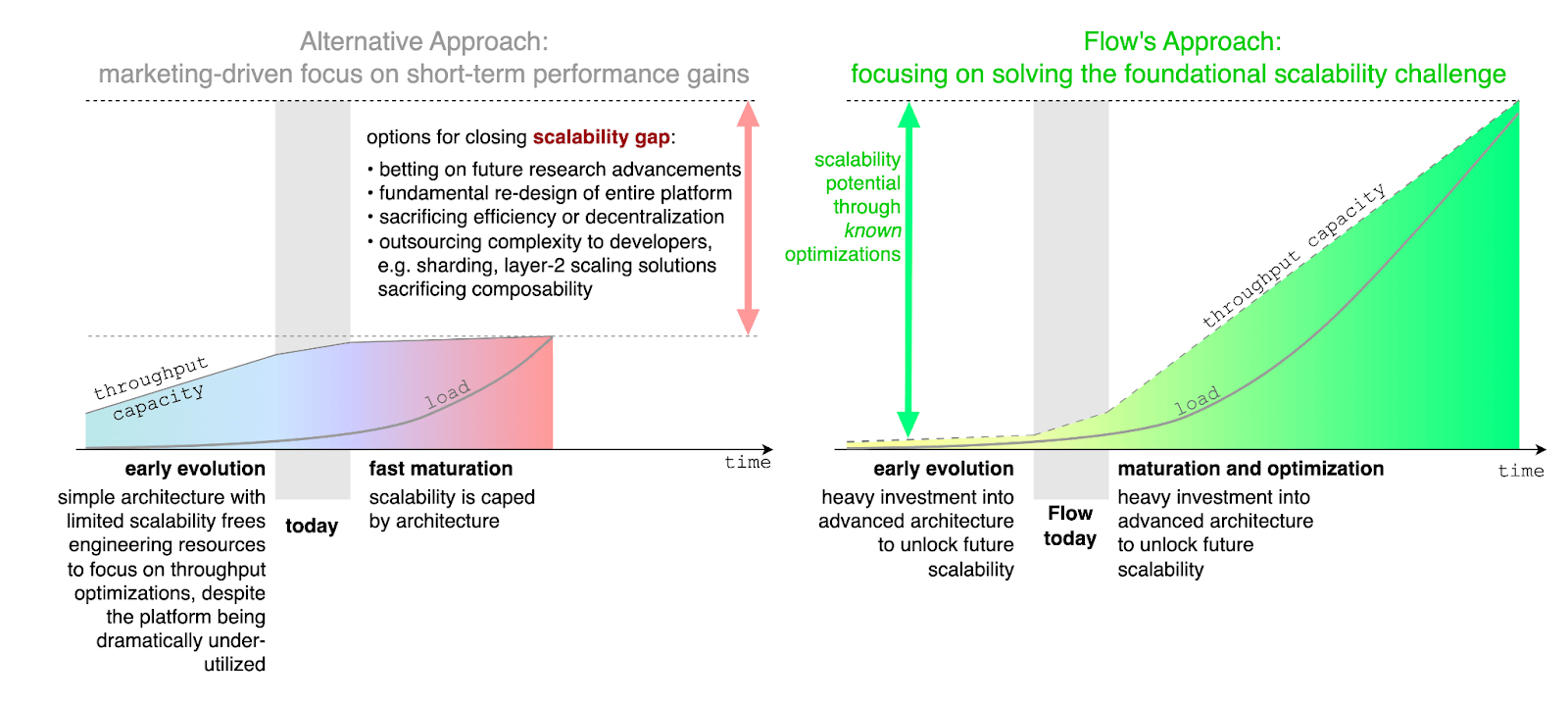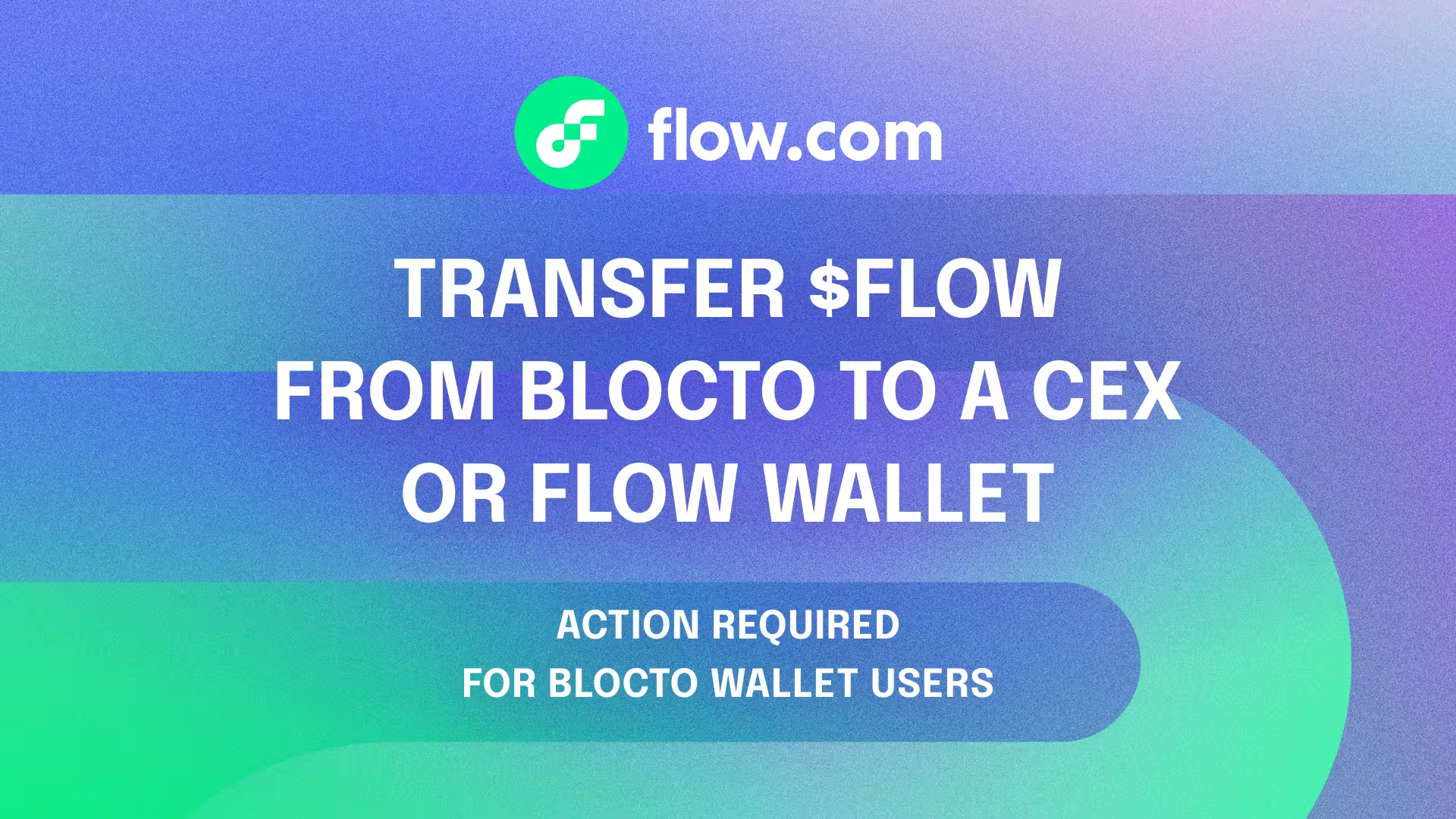
Flow’s integration of the Ethereum Virtual Machine (EVM) is a huge leap forward for developers and users of EVM-based applications. EVM on Flow is designed to scale and extend the capabilities of the EVM, making it more accessible and efficient for developers and consumers alike. By leveraging Flow’s unique architecture and features, EVM developers can supercharge their apps, achieving better scalability, lower transaction costs, and seamless cross-chain interoperability.
Connecting with Web3

With EVM on Flow, we’ve bridged this gap, achieving full interoperability with Web3 and enabling seamless integration with other EVM-compatible chains. Adding bridges to our ecosystem will let assets move easily between Flow and other blockchains, expanding the functionality and reach of EVM apps. Imagine a DeFi app on Ethereum integrating with Flow to benefit from lower transaction costs and higher scalability while maintaining connections with the Ethereum ecosystem. Developers can now leverage both Flow’s native features and EVM capabilities, giving users a versatile and robust experience.
Flow’s single composable environment sets it apart from Ethereum Layer 2 solutions. Various decentralized applications (dApps) can interact seamlessly within Flow’s ecosystem without the fragmentation seen in Layer 2 solutions. For example, an NFT marketplace can easily interact with a DeFi protocol, enabling complex interactions like collateralizing NFTs for loans, all within a unified environment. For example, with a single Flow transaction, a user can purchase an NFT on a marketplace that uses Cadence, fulfill an offer in another marketplace based in Solidity, and check if the transaction was profitable using a post condition, canceling the transaction if it was not. This level of composability allows developers to build more interconnected and sophisticated applications, enhancing functionality and user experience.
Smooth Shift for Developers

The introduction of EVM on Flow marks the beginning of a new era, one where the barriers to entry are lower and the opportunities for growth are vast. With EVM on Flow, developers from across the Web3 ecosystem will find it as easy to build on Flow as it is on any other EVM-compatible chain. This ease of integration is made possible by Flow’s support for all the familiar tools that Solidity developers love, including Remix, Hardhat, and Truffle.
This seamless compatibility ensures that developers don’t need to learn new tools or workflows, making the transition to Flow smooth and straightforward. The result is an ecosystem where platforms and developers can flourish, leveraging Flow’s advanced capabilities without the steep learning curve.
Preferred platforms and tools that app developers use can integrate with Flow as easily as they do with any other EVM chain. This compatibility means that developers can continue to innovate and build boldly, knowing that the infrastructure they rely on will support their ambitions. The expansion of tools and platforms on Flow represents a massive growth opportunity for developers, enabling them to create more robust and scalable applications.
Scaling with EVM on Flow

Flow’s scalable architecture tackles the scalability trilemma that has long hindered blockchain networks. By separating dedicated nodes with specific roles, Flow achieves unparalleled efficiency. For EVM developers, with Flow running EVM directly on Execution nodes, their applications can achieve unprecedented scalability on Flow, handling more transactions with greater efficiency than Ethereum’s mainnet or even Layer 2 solutions. For a detailed explanation of Flow’s multi-node architecture and its advantages, you can refer to this blog post.
Currently, app developers have to make scaling decisions that impact their user experience and technical implementations. The path for scaling many networks requires splitting the chain to layer 2’s and layer 3’s where Flow has a fully integrated protocol while at its core using the same principles with different roles across nodes. High throughput and low latency are crucial for applications requiring rapid and reliable performance, and Flow delivers just that.
This impressive scalability directly contributes to Flow’s cost efficiency. High transaction costs can be a barrier to developing and scaling blockchain applications, but Flow’s efficient consensus mechanism and parallelized execution significantly reduce operational costs for EVM contracts. Lower transaction fees make micro-transactions feasible and improve the overall user experience.
Flow’s approach not only reduces costs but also stabilizes fee predictability. Developers can confidently design applications, knowing that users won’t be deterred by fluctuating and often high transaction fees. This cost efficiency is a game-changer for applications where transaction costs can be a barrier to entry.
Conclusion
EVM on Flow is a game-changer for EVM developers, offering significant enhancements in interoperability, composability, scalability, and cost efficiency. Flow’s unique multi-node architecture provides unparalleled scalability, enabling thousands of transactions per second. The reduction in transaction costs makes micro-transactions feasible, improving the user experience and broadening the scope of possible applications.
The seamless cross-chain interoperability through bridge contracts allows developers to leverage the strengths of both Flow and EVM, creating more versatile and robust applications. Flow’s composability ensures that applications operate in a unified environment, overcoming the limitations of Ethereum’s Layer 2 solutions.
For developers looking to build the next generation of blockchain applications, Flow offers a powerful and efficient platform that enhances the capabilities of EVM while providing significant improvements. As the blockchain landscape continues to evolve, Flow stands out as a leading choice for innovative and scalable Web3 development. Continue reading Part 2 here.


















